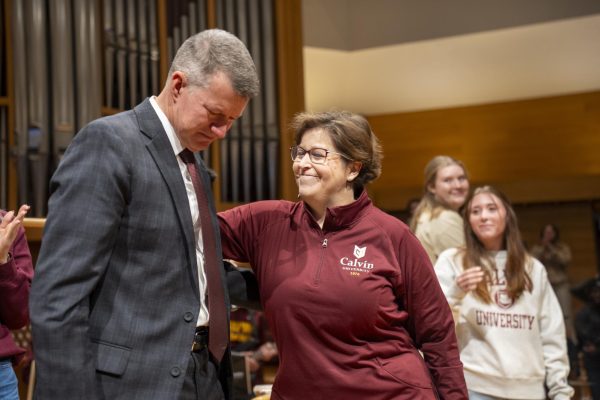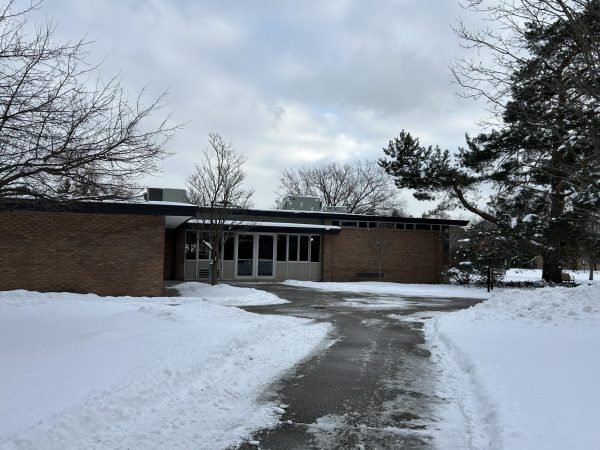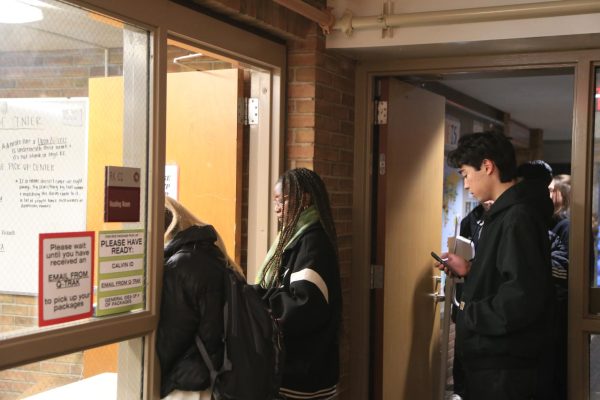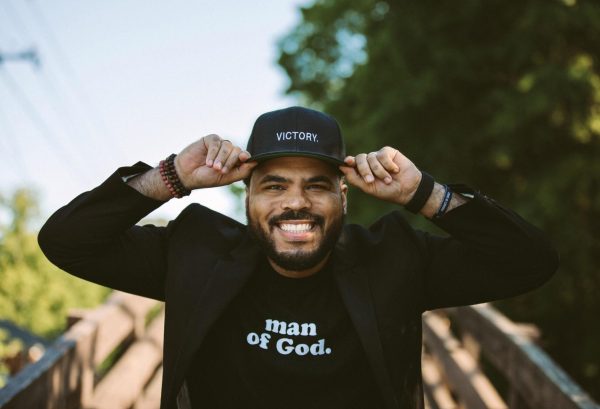Calvin’s drug and alcohol use comparable to national average
This past interim, nearly forty Calvin students took a class entitled, “The Complex World of Drugs.” The class, which was offered as both a DCM and a non-DCM, included a diverse mix of lower and upper-level students. The class was taught by Professors Kurt Ver Beek and Jo Ann Van Engen, the professors who lead Calvin’s Honduras semester.
Ver Beek and Van Engen stated during the course that their interest in drug use and drug policy grew out of their work in Honduras and the amount of drug traffic and governmental control in that country. The course also included a Skype presentation and interview with a Drug Enforcement Administration (DEA) officer, as well as a presentation by the Grand Rapids Police Department.
The class examined global drug use and drug policy, yet it also explored on drug use at Calvin, specifically through data collected by the class in the form of a brief survey. The data displayed alongside this article demonstrates some of the findings of the survey.
According to Lauren Anderson, a senior nursing student, the survey was created by Ver Beek and Van Engen and made available to students on the first day of class. Each student was required to get at least four of their friends to take the survey, with the ultimate participation goal of around five-hundred Calvin students. Ultimately, the data presented in the class (and alongside this article) is data from approximately three hundred Calvin students.
The survey asked participants two kinds of questions. The first was intended to determine student perception of drug use at Calvin, and the second was more focused on determining actual student drug use at Calvin.
According to the survey results, the perception is that Calvin students use heroin, ecstasy, prescription painkillers (without a prescription) and underage alcohol consumption at higher rates than they are actually used (overestimated by approximately 10, 5, 3 and 3 percent, respectively). On the other hand, marijuana and ADHD medication were both used at higher rates than predicted (approximately 25 and 2 percent higher, respectively). According to this survey data, cocaine use was perfectly predicted.
When compared to national statistics for college-age students (18-25 years old), the Calvin students surveyed align closely with national averages. The Calvin students surveyed use marijuana, prescription painkillers, and consume alcohol underage at slightly higher rates than the national average (approximately 2, 3, and 15 percent, respectively). Cocaine, Heroin, Ecstasy and ADHD medication were all used by the Calvin students surveyed at slightly lower rates than the national report (approximately 4, >1, 2 and 7 percent, respectively).
According to Anderson, the professors and the students did have some reservations concerning false reporting:
“When friends were taking it, there were definitely questions like: ‘is this anonymous, like, will people find out? Who’s gonna know?’ And some people did answer honestly, but some people were like, ‘I’m not gonna answer honestly because I don’t feel comfortable.'”
When reflecting on the comparison of Calvin data to national data, Anderson remarked, “I think we want to believe, as a Christian institution, that our results would be drastically different than the national average, but this shows different — we’re quite comparable.”
Because this was the first year this course had been offered, Anderson appreciated the mix of perspectives and the age range of the course:
“A lot of people had different reasons for being interested in the course, some people want to go into policy, some people had friends who do drugs, or they might do drugs, or know people who are doing drugs.”
Commenting on the importance of studying drug use at Calvin, Anderson said, “I knew illegal drug trafficking was something that had many repercussions, but I don’t think I realized the magnitude that these poor farmers, in Colombia and Bolivia [farmers that supply raw materials used to produce drugs like cocaine and heroin], like American army officers are flying planes over and eradicating their crops, trying to decrease cocaine [traffic] in the U.S.”
The course gave Anderson a more holistic and involved perspective of the drug trade and the way it impacts people beyond users, dealers and law enforcement — it impacts global economy and global relationships.
She explained, “Just thinking about the impact that drugs have on everyone, even if we’re not directly…that’s where a lot of dollars are going. To keep people in jail and to keep them alive, because a lot of the reasons that people stay [in prison] is for these minimum drug charges.”
Speaking of the reasoning behind having a class about drugs at Calvin, Anderson said, “I think it’s important as a Christian institution, as Calvin, to be talking about this because we are here to learn how to engage with the world and I think it’s necessary to know what’s going on so that we can make educated decisions and prayerful decisions in how we approach policy and how we see that God holds all things together, and learn how we can participate with God in shalom, and figuring out what that looks like, rather than keeping [drugs in] a secular box, and God in a spiritual box.”
“I came away from the class with many more questions than answers, but also that hope that, at Calvin, we can continue talking about difficult things that we don’t know the answers [to] yet. I think this was a class that did that very well.”
When it comes to actually decreasing drug traffic at Calvin, Anderson said, “I think it starts with talking about things, just like people are talking about politics post-election, how that has become a hot topic.”
Anderson came away from the class with a fresh interest in exploring the reasons why Calvin students turn to drugs.
She said, “I want to know why people want to get numb? Why do people want to get hammered? Why do people want to do all these things? I think that’s when you start to get answers.”
Knowing the reason why someone may turn to drugs can lead to a productive discussion and proposition of possible alternatives.






